A Robust Experimental Model to Explore the Three-Dimensional Printing of Polylactide Parts: Solution versus Melt Extrusion
Abstract
:1. Introduction
2. Materials and Methods
2.1. Materials
2.2. Experimental Setup
2.3. Empirical Factors and Orthogonal Design
2.4. Characterization of Printed Parts
3. Results
3.1. Optimizing the Processing Conditions
3.2. Confirmation Experiments
3.3. Importance of Processing Parameters
3.4. Characterization of Melt- and Solution-Printed Parts
4. Discussion
4.1. Melt Extrusion-Printed Products
4.2. Solution Extrusion-Printed Parts
5. Conclusions
Author Contributions
Funding
Conflicts of Interest
References
- Ngo, T.D.; Kashani, A.; Imbalzano, G.; Nguyen, K.T.Q.; Hui, D. Additive manufacturing (3D printing): A review of materials, methods, applications and challenges. Compos. Part B 2018, 143, 172–196. [Google Scholar] [CrossRef]
- Choi, J.C.; Kwon, O.C.; Jo, W.; Lee, H.J.; Moon, M.W. 4D printing technology: A review. 3D Print Addit. Manuf. 2015, 2, 2159–2167. [Google Scholar] [CrossRef]
- Alafaghani, A.; Qattawi, A.; Alrawi, B.; Guzman, A. Experimental optimization of Fused Deposition Modelling processing parameters: A design-for-manufacturing approach. Procedia Manuf. 2017, 10, 791–803. [Google Scholar] [CrossRef]
- Guerra, A.J.; Ciurana, J. 3D-printed bioabsordable polycaprolactone stent: The effect of process parameters on its physical features. Mater. Des. 2018, 137, 430–437. [Google Scholar] [CrossRef]
- Holländer, J.; Genina, N.; Jukarainen, H.; Khajeheian, M.; Rosling, A.; Mäkilä, E.; Sandler, N. Three-dimensional printed PCL-based implantable prototypes of medical devices for controlled drug delivery. J. Pharm. Sci. 2016, 105, 2665–2676. [Google Scholar] [CrossRef] [PubMed] [Green Version]
- Visscher, L.E.; Dang, H.P.; Knackstedt, M.A.; Hutmacher, D.W.; Tran, P.A. 3D printed Polycaprolactone scaffolds with dual macro-microporosity for applications in local delivery of antibiotics. Mater. Sci. Eng. C 2018, 87, 78–89. [Google Scholar] [CrossRef] [PubMed] [Green Version]
- Yi, H.G.; Choi, Y.J.; Kang, K.S.; Hong, J.M.; Pati, R.G.; Park, M.N.; Shim, I.K.; Lee, C.M.; Kim, S.C.; Cho, D.W. A 3D-printed local drug delivery patch for pancreatic cancer growth suppression. J. Control. Release 2016, 238, 231–241. [Google Scholar] [CrossRef] [PubMed]
- Huang, B.; Meng, S.; He, H.; Jia, Y.; Xu, Y.; Huang, H. Study of processing parameters in fused deposition modeling based on mechanical properties of Acrylonitrile-Butadiene-Styrene filament. Polym. Eng. Sci. 2019, 59, 120–128. [Google Scholar] [CrossRef] [Green Version]
- Ingrassia, T.; Nigrelli, V.; Ricotta, V.; Tartamella, C. Process Parameters Influence in Additive Manufacturing. In Advances on Mechanics, Design Engineering and Manufacturing; Eynard, B., Nigrelli, V., Oliveri, S., Peris-Fajarnes, G., Rizzuti, S., Eds.; Springer: Cham, Switzerland, 2017. [Google Scholar]
- Maloch, J.; Hnatkova, E.; Zaludek, M.; Kratky, P. Effect of processing parameters on mechanical properties of 3D printed samples. Mater. Sci. Forum 2018, 919, 230–235. [Google Scholar] [CrossRef]
- Lanzotti, A.; Grasso, M.; Staiano, G.; Martorelli, M. The impact of process parameters on mechanical properties of parts fabricated in PLA with an open-source 3-D printer. Rapid Prototyp. J. 2015, 21, 604–617. [Google Scholar] [CrossRef] [Green Version]
- Pretula, J.; Slomkowski, S.; Penczek, S. Polylactides-Methods of synthesis and characterization. Adv. Drug Deliv. Rev. 2016, 107, 3–16. [Google Scholar] [CrossRef] [PubMed]
- Farah, S.; Anderson, D.G.; Langer, R. Physical and mechanical properties of PLA, and their functions in widespread applications—A comprehensive review. Adv. Drug Deliv. Rev. 2016, 107, 367–392. [Google Scholar] [CrossRef] [PubMed] [Green Version]
- Dehnad, K. Quality Control, Robust Design, and the Taguchi Method; Springer: Berlin/Heidelberg, Germany, 1989. [Google Scholar]
- Davim, J.P. Design of Experiments in Production Engineering; Springer: Berlin/Heidelberg, Germany, 2016. [Google Scholar]
- Sato, S.; Gondo, D.; Wada, T.; Kanehashi, S.; Nagai, K. Effects of various liquid organic solvents on solvent-induced crystallization of amorphous poly (lactic acid) film. J. Appl. Polym. Sci. 2013, 129, 1607–1617. [Google Scholar] [CrossRef]
- Yokomizo, K.; Banno, Y.; Yoshikawa, T.; Kotaki, M. Effect of molecular weight and molecular weight distribution on weld-line interface in injection-molded polypropylene. Polym. Eng. Sci. 2013, 53, 2336–2344. [Google Scholar] [CrossRef]
- Yizong, T.; Ariff, Z.M.; Liang, K.G. Evaluation of weld line strength in low density polyethylene specimens by optical microscopy and simulation. J. Eng. Sci. 2017, 13, 53–62. [Google Scholar]
- Costa, L.M.M.; Bretas, R.E.S.; Gergorio, R., Jr. Effect of solution concentration on the electrospray/electrospinning transition and on the crystalline phase of PVDF. Mater. Sci. Appl. 2010, 1, 247–252. [Google Scholar] [CrossRef] [Green Version]

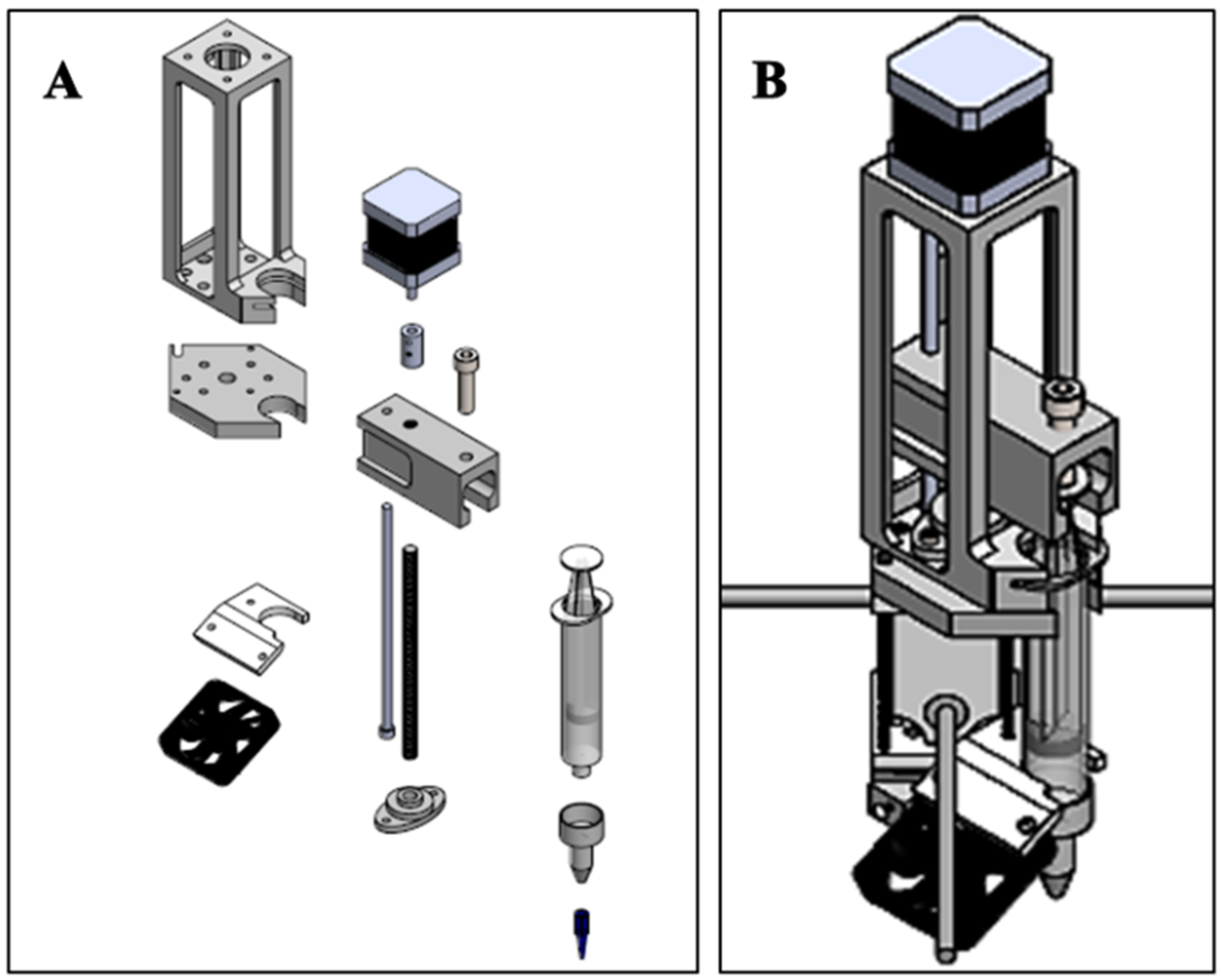

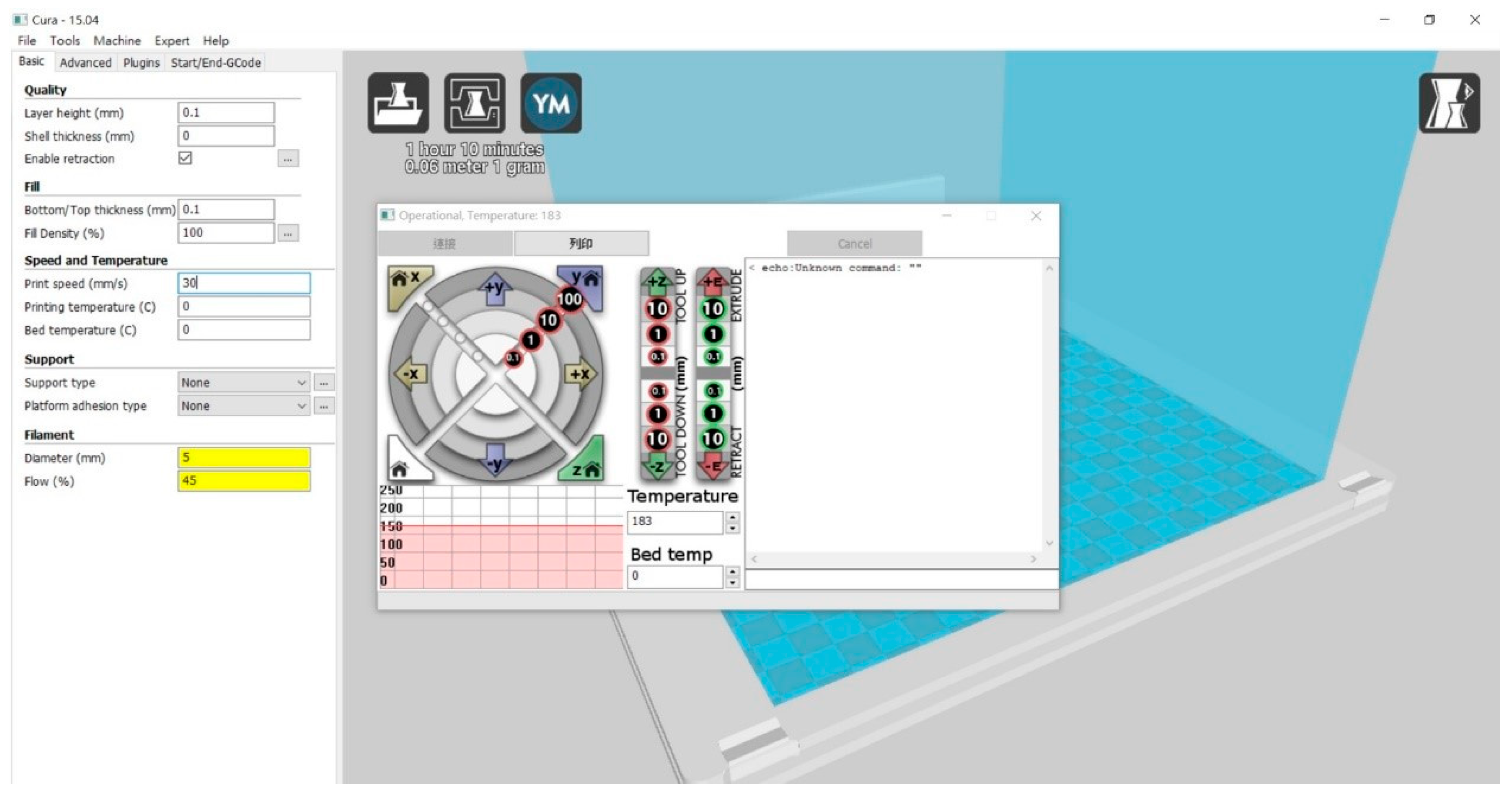

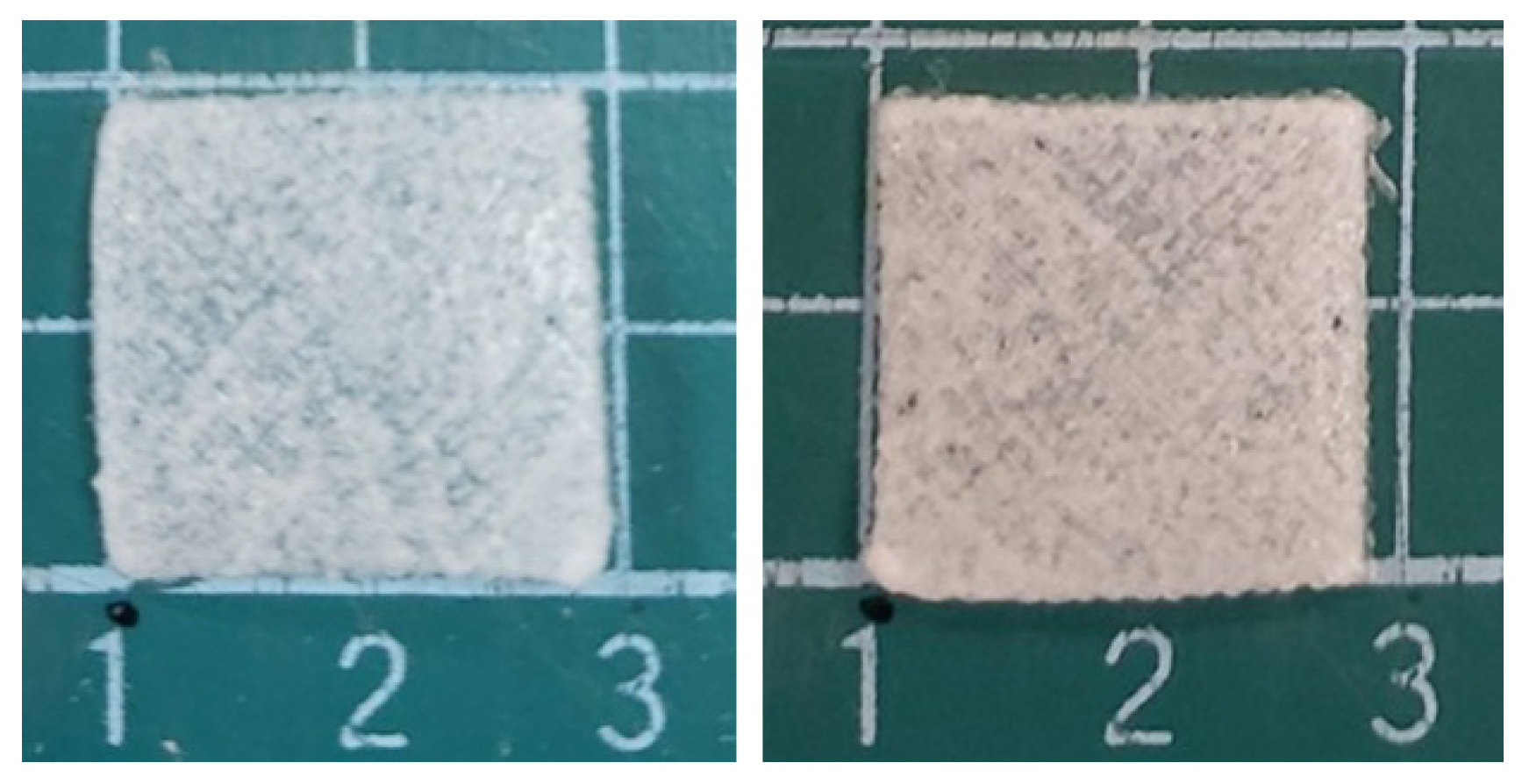
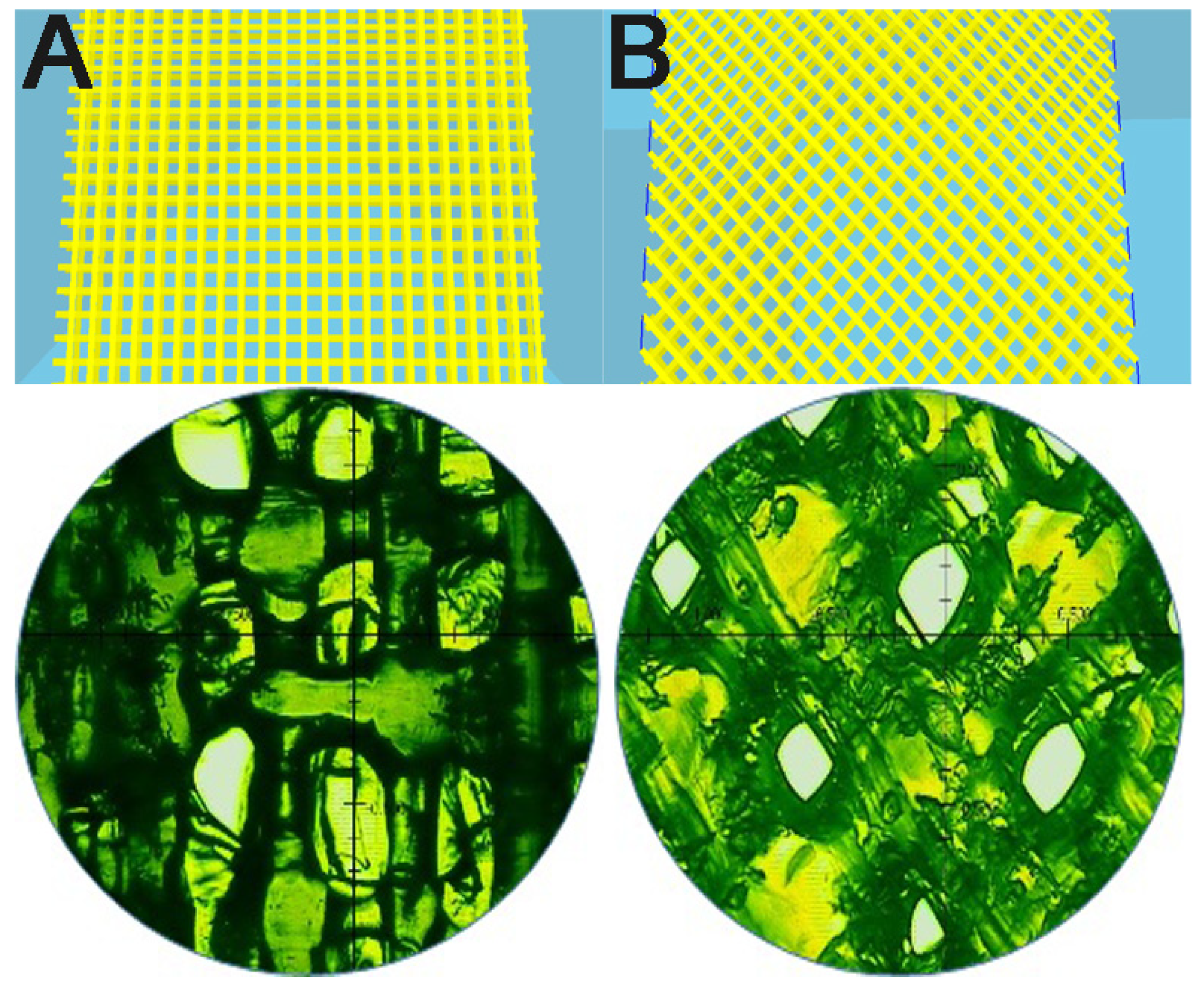
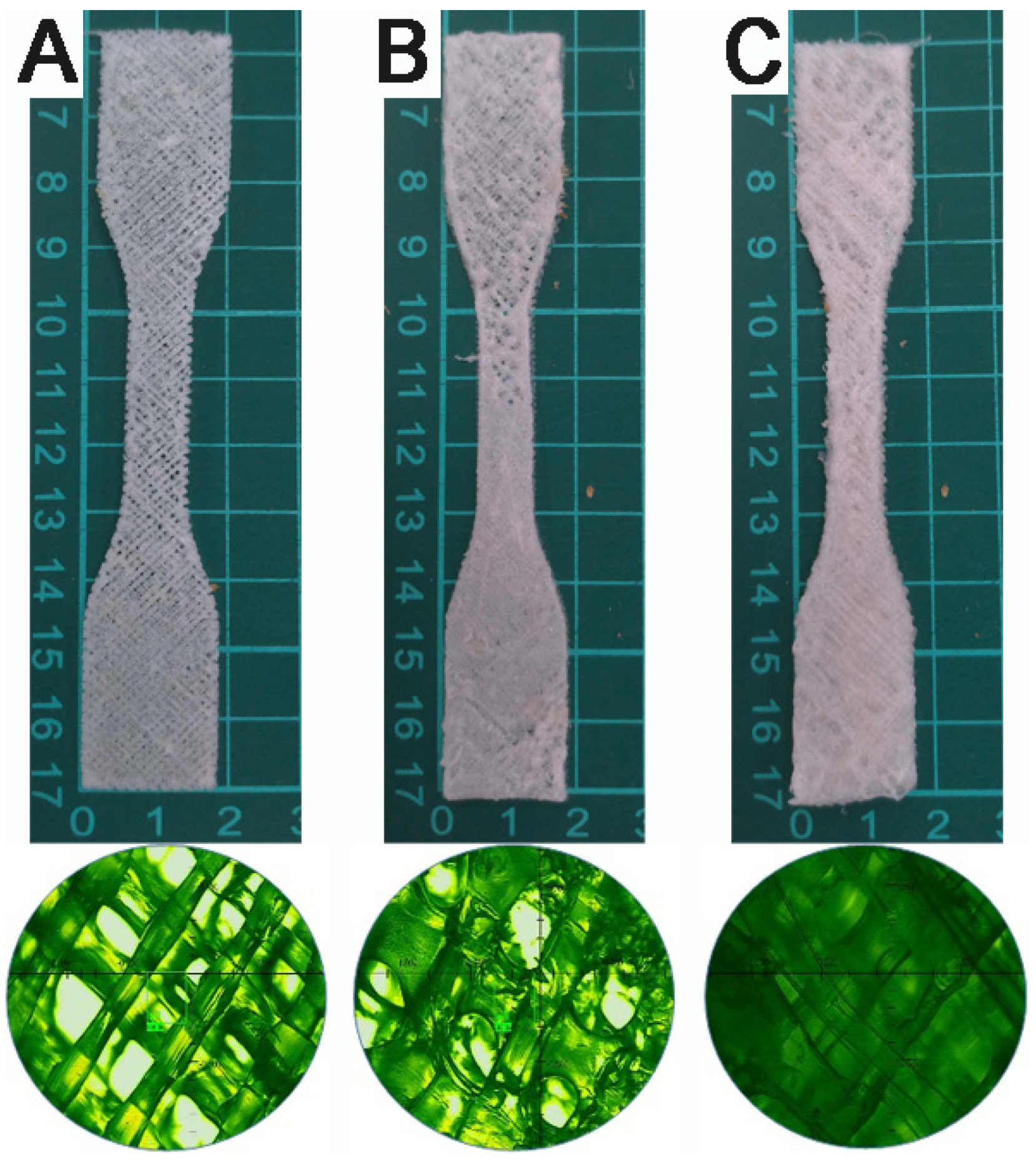


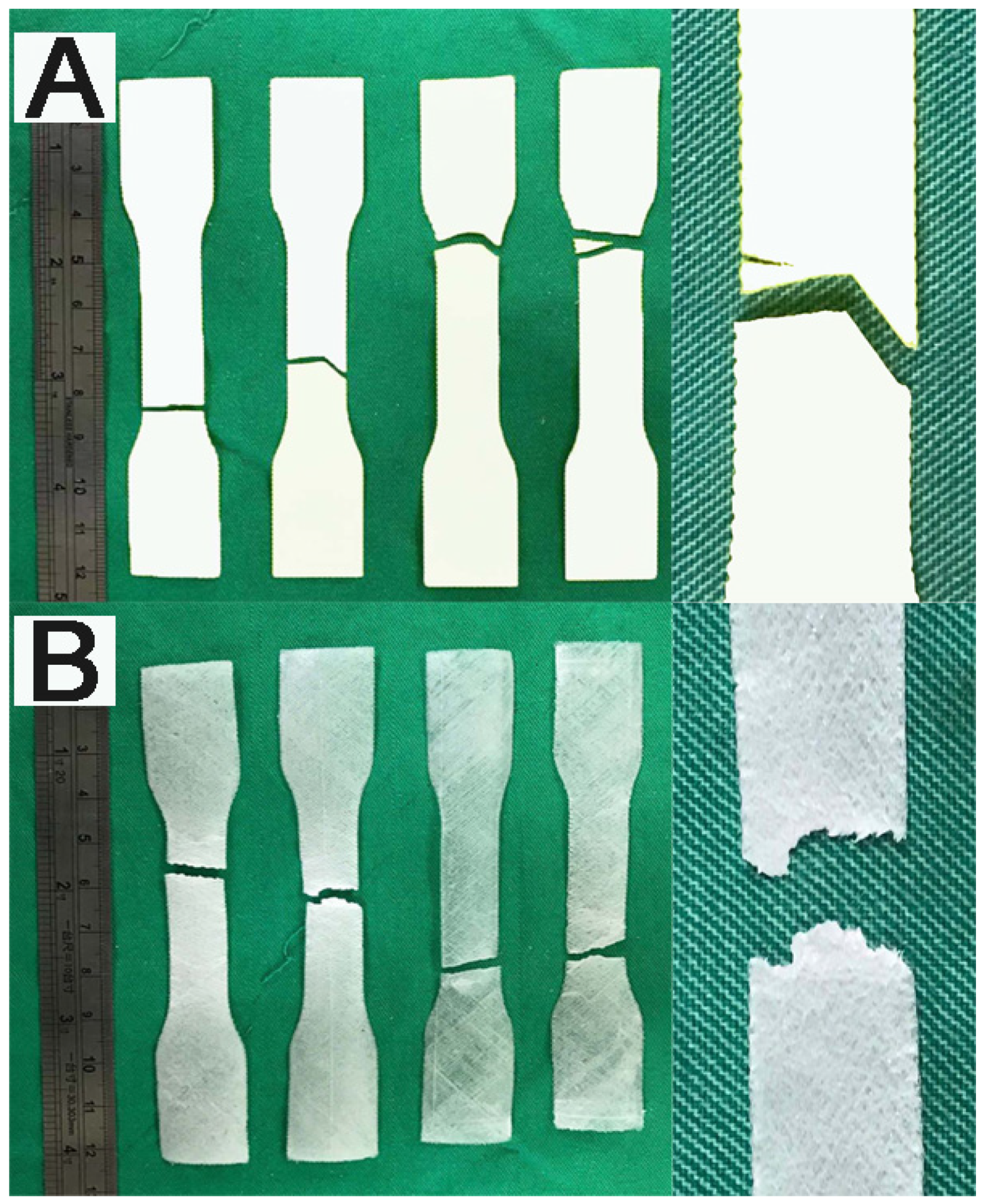
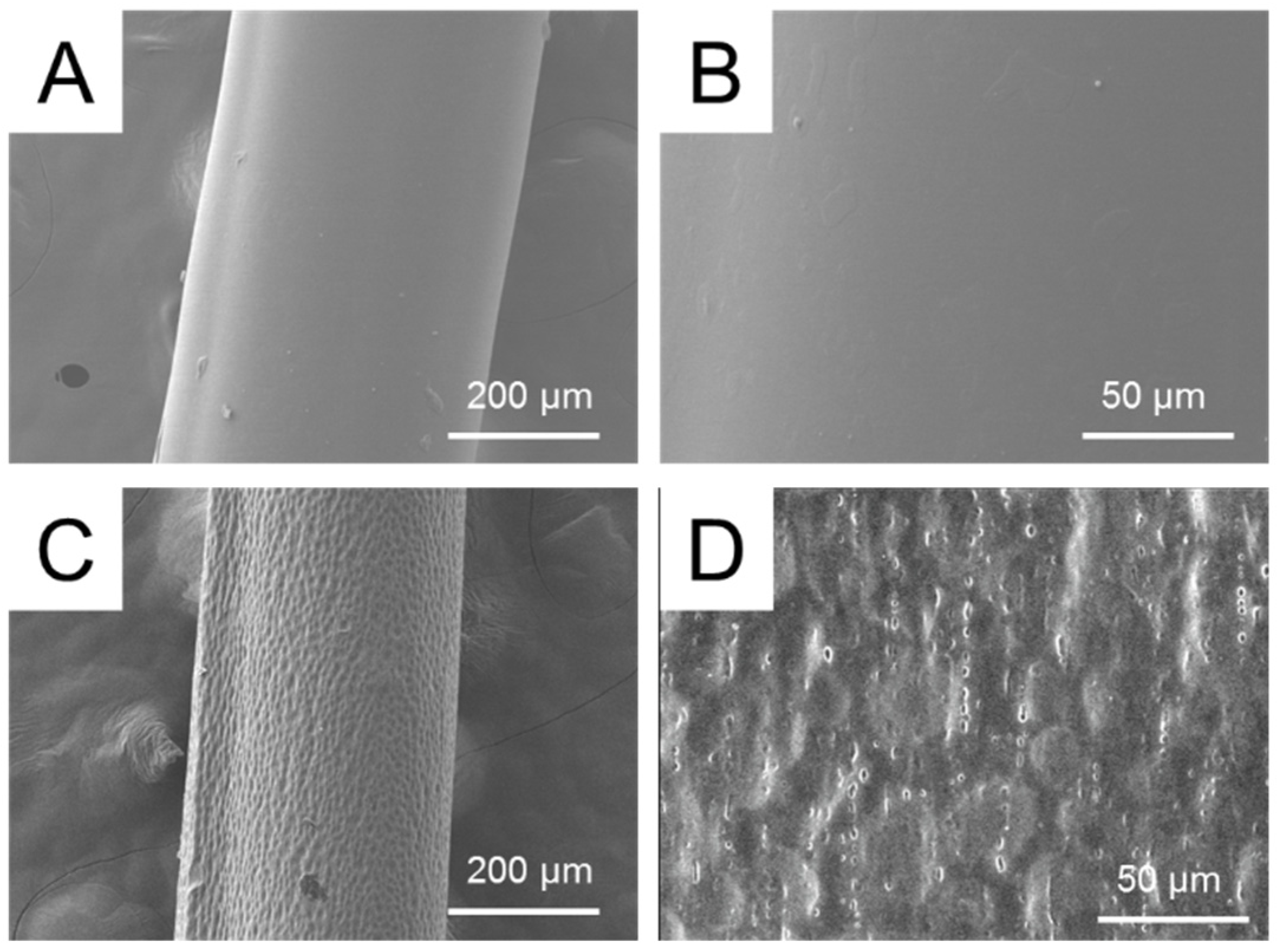
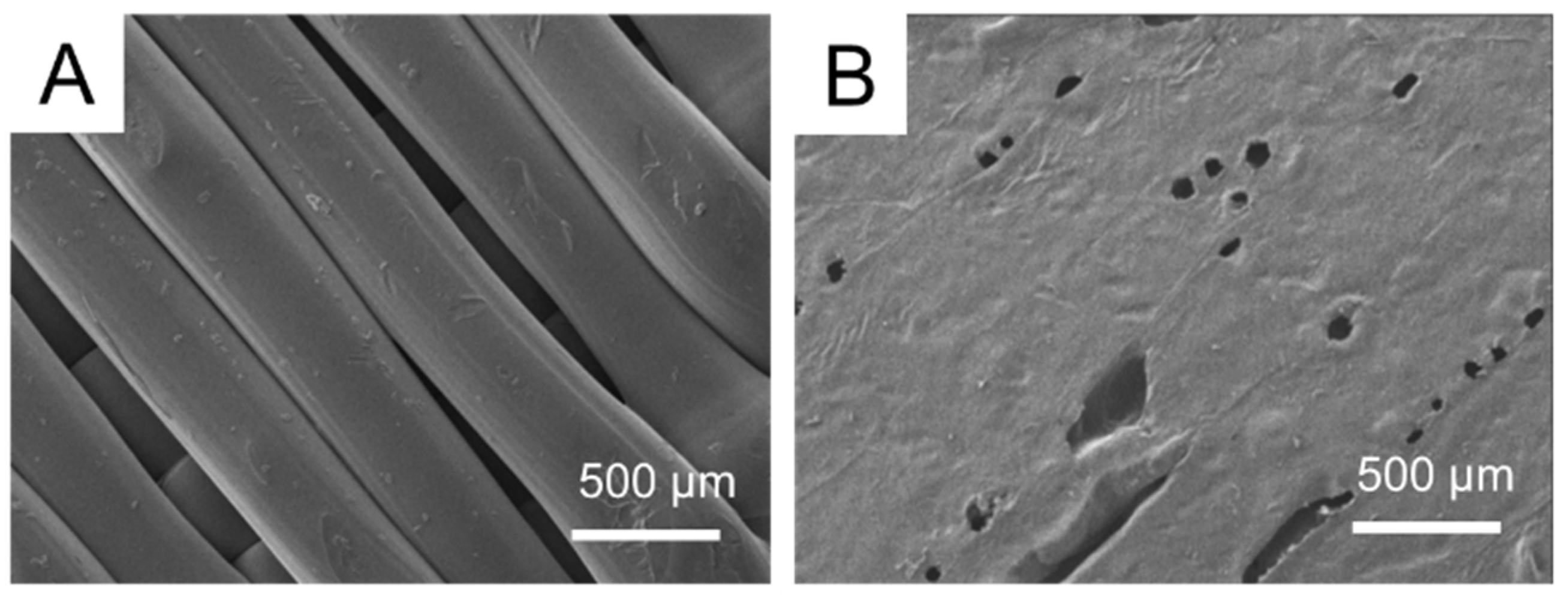
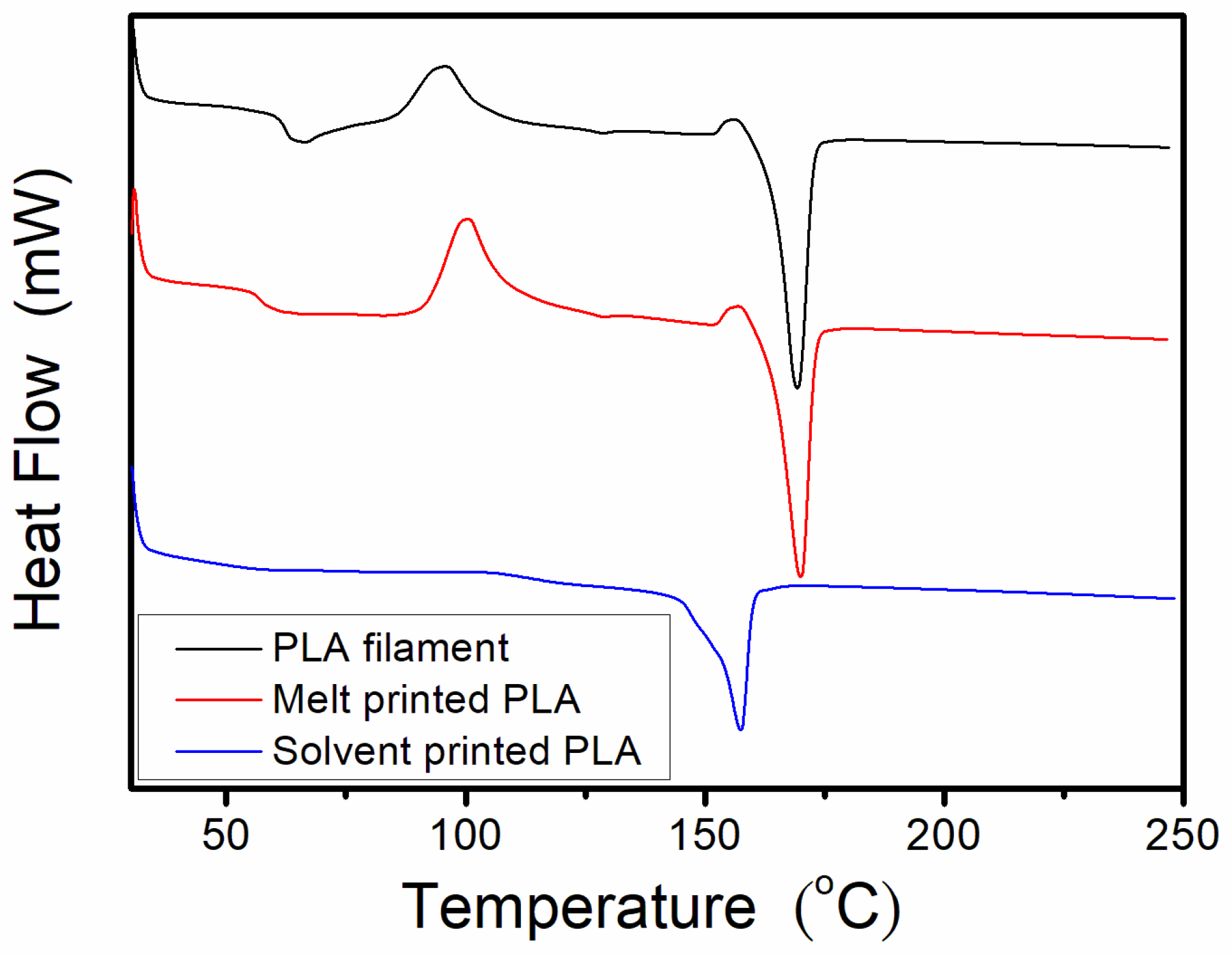
| Factor | A: Print Orientation | B: Fill Density (%) | C: Oven Temperature (°C) | D: Nozzle Temperature (°C) | E: Print Speed (mm/s) |
|---|---|---|---|---|---|
| Level 1 | 0° | 40 | 25 | 210 | 50 |
| Level 2 | 45° | 50 | 30 | 220 | 55 |
| Level 3 | 60 | 35 | 230 | 60 |
| Factor | A: Print Speed (mm/s) | B: Fill Density (%) | C: PLA/DCM * (gram/mL) | D: Oven Temperature (°C) | E: Print Orientation |
|---|---|---|---|---|---|
| Level 1 | 30 | 45 | 5/5.5 | 25 | 0° |
| Level 2 | 35 | 65 | 5/5.8 | 20 | 45° |
| Level 3 | 40 | 75 | 5/5.2 | 22 |
| Run | A | B | C | D | E | Tensile Strength (MPa) | S/N (dB) |
|---|---|---|---|---|---|---|---|
| 1 | 1 | 1 | 1 | 1 | 1 | 25.8912 | 17.2067 |
| 2 | 1 | 1 | 2 | 2 | 2 | 25.8956 | 12.4604 |
| 3 | 1 | 1 | 3 | 3 | 3 | 25.7648 | 15.4102 |
| 4 | 1 | 2 | 1 | 1 | 2 | 17.6311 | 17.2866 |
| 5 | 1 | 2 | 2 | 2 | 3 | 21.7794 | 15.1252 |
| 6 | 1 | 2 | 3 | 3 | 1 | 27.2075 | 27.8752 |
| 7 | 1 | 3 | 1 | 2 | 1 | 29.2373 | 24.1081 |
| 8 | 1 | 3 | 2 | 3 | 2 | 28.2660 | 22.0089 |
| 9 | 1 | 3 | 3 | 1 | 3 | 26.2236 | 21.5623 |
| 10 | 2 | 1 | 1 | 3 | 3 | 38.5899 | 20.9683 |
| 11 | 2 | 1 | 2 | 1 | 1 | 39.3467 | 15.2586 |
| 12 | 2 | 1 | 3 | 2 | 2 | 36.5488 | 15.7932 |
| 13 | 2 | 2 | 1 | 2 | 3 | 34.8563 | 28.0316 |
| 14 | 2 | 2 | 2 | 3 | 1 | 35.9217 | 20.0155 |
| 15 | 2 | 2 | 3 | 1 | 2 | 38.6325 | 22.8987 |
| 16 | 2 | 3 | 1 | 3 | 2 | 31.7675 | 26.0880 |
| 17 | 2 | 3 | 2 | 1 | 3 | 33.4164 | 21.5181 |
| 18 | 2 | 3 | 3 | 2 | 1 | 37.2535 | 31.3118 |
| Run | A | B | C | D | E | Tensile Strength (MPa) | S/N (dB) |
|---|---|---|---|---|---|---|---|
| 1 | 1 | 1 | 1 | 1 | 1 | 2.05535 | 4.40889 |
| 2 | 1 | 2 | 2 | 2 | 1 | 6.23888 | 15.88327 |
| 3 | 1 | 3 | 3 | 3 | 1 | 6.73575 | 16.1665 |
| 4 | 2 | 1 | 2 | 3 | 1 | 8.94463 | 19.01 |
| 5 | 2 | 2 | 3 | 1 | 1 | 7.13605 | 16.93238 |
| 6 | 2 | 3 | 1 | 2 | 1 | 5.7358 | 15.02893 |
| 7 | 3 | 1 | 3 | 2 | 1 | 4.81983 | 13.47489 |
| 8 | 3 | 2 | 1 | 3 | 1 | 8.0427 | 18.10108 |
| 9 | 3 | 3 | 2 | 1 | 1 | 6.74428 | 16.50814 |
| 10 | 1 | 1 | 1 | 1 | 2 | 1.60975 | 3.35802 |
| 11 | 1 | 2 | 2 | 2 | 2 | 7.51928 | 17.4975 |
| 12 | 1 | 3 | 3 | 3 | 2 | 9.0553 | 19.08548 |
| 13 | 2 | 1 | 2 | 3 | 2 | 5.32435 | 14.48105 |
| 14 | 2 | 2 | 3 | 1 | 2 | 3.18123 | 9.64352 |
| 15 | 2 | 3 | 1 | 2 | 2 | 9.12595 | 19.16463 |
| 16 | 3 | 1 | 3 | 2 | 2 | 2.79238 | 8.48284 |
| 17 | 3 | 2 | 1 | 3 | 2 | 5.2392 | 14.35377 |
| 18 | 3 | 3 | 2 | 1 | 2 | 9.5555 | 19.58572 |
© 2020 by the authors. Licensee MDPI, Basel, Switzerland. This article is an open access article distributed under the terms and conditions of the Creative Commons Attribution (CC BY) license (http://creativecommons.org/licenses/by/4.0/).
Share and Cite
Chen, J.-M.; Tseng, Y.-Y.; Lee, D.; Lin, Y.-T.; Lin, S.-H.; Lee, T.-Y.; Liu, S.-J.; Ito, H. A Robust Experimental Model to Explore the Three-Dimensional Printing of Polylactide Parts: Solution versus Melt Extrusion. Appl. Sci. 2020, 10, 509. https://doi.org/10.3390/app10020509
Chen J-M, Tseng Y-Y, Lee D, Lin Y-T, Lin S-H, Lee T-Y, Liu S-J, Ito H. A Robust Experimental Model to Explore the Three-Dimensional Printing of Polylactide Parts: Solution versus Melt Extrusion. Applied Sciences. 2020; 10(2):509. https://doi.org/10.3390/app10020509
Chicago/Turabian StyleChen, Jian-Ming, Yuan-Yun Tseng, Demei Lee, Yu-Ting Lin, Sheng-Han Lin, Tan-Yu Lee, Shih-Jung Liu, and Hiroshi Ito. 2020. "A Robust Experimental Model to Explore the Three-Dimensional Printing of Polylactide Parts: Solution versus Melt Extrusion" Applied Sciences 10, no. 2: 509. https://doi.org/10.3390/app10020509







